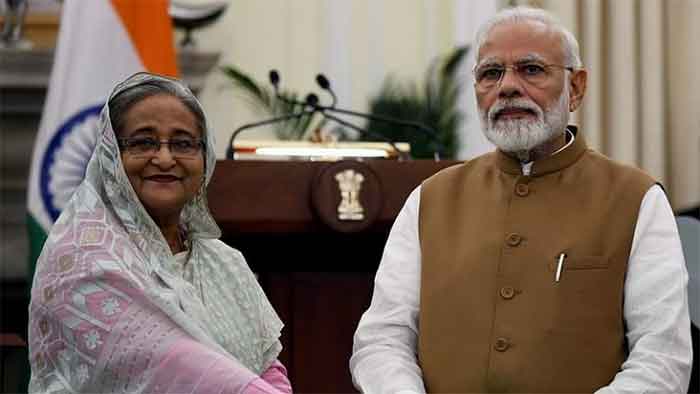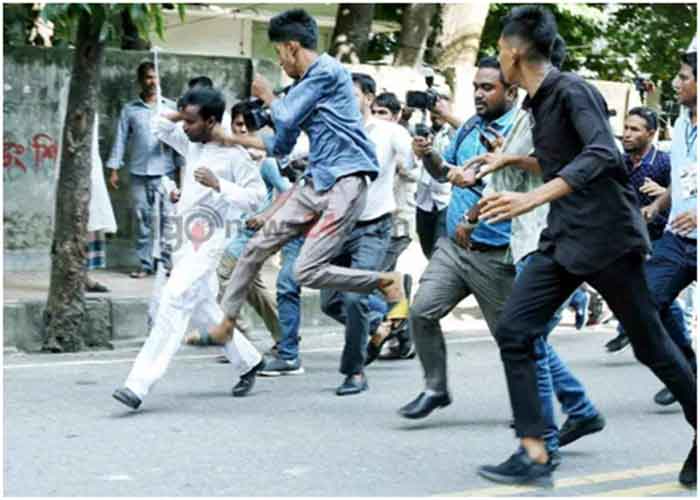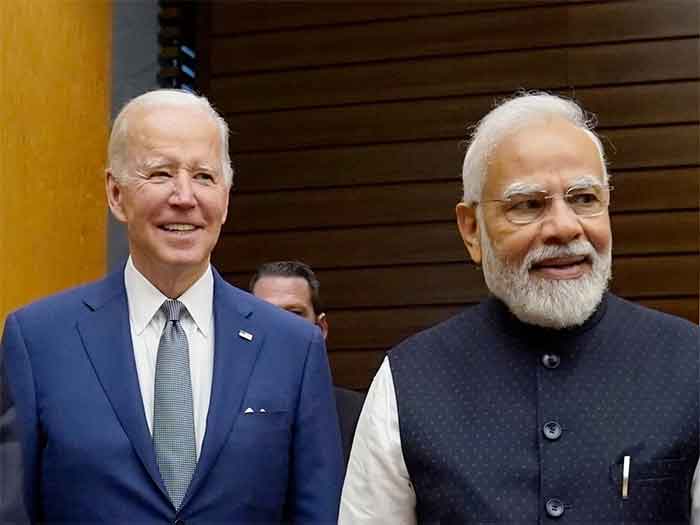
In the life of a nation, perhaps, the first fifty years ought to be regarded as marking the rites of passage through adolescence. India can congratulate itself for helping navigate Bangladesh through a difficult childhood. Parentage of a precocious child isn’t easy and Bangladesh can be opinionated, while figuring out its own pathway. India hasn’t always been an indulgent guardian, either. It has been a complex relationship fraught with loaded history and intense cultural and ethnic identities.
In the recent decades, India adopted a novel experiment — tacit acquiescence with the rise of authoritarianism in Bangladesh. Fundamentally, not to be prescriptive towards others about “values” is the correct norm to maintain in inter-state relationships. The ploy worked.
Prime Minister Sheikh Hasina’s domestic politics gained decisively out of Delhi’s tacit encouragement for her authoritarian rule. Hasina reciprocated in areas that constituted some of India’s core interests. This tactical arrangement suited both sides. Admittedly, the volatility in India’s far-flung northeastern region would have aggravated without Hasina’s helping hand. India showed its gratitude in the generous land deal settling the border dispute.
A critical mass is available today to build a superstructure in the bilateral relationship, with eye on the future. Now, this is also where a huge challenge lies. India has self-interests in keeping things just the way it is, but life is dynamic.
For a start, the matrix of peace, regional stability and stability is inextricably linked with connectivity. Bangladesh is, therefore, an indispensable partner. With its cooperation, India gets better connectivity to integrate the restive northeastern regions.
To be sure, India’s own future lies in enhancing its connectivity with the adjacent Asian countries with booming economies. It can be potentially a game changer if and when India jettisons its autarchic mindset and decides to join the new supply chains emerging out of the Regional Comprehensive Economic Partnership (RCEP), the single biggest free trade zone on the planet. But geopolitics takes precedence over geoeconomics in the Indian policies.
The RCEP is coming into effect on 1st January 2022 and India is not part of it. Hopefully, this may change in future, since, as history shows, it is usually the case that it is those countries that are in the money business, finance, and international trade who are the really rich. Whereas, nationalism makes nations poor ultimately because its Siamese twin, protectionism, will destroy the internal market and disrupt international trade.
Barack Obama’s truism that post-Brexit Britain, in respect of international trade, would have to get to the back of the queue applies to India’s predicament as well. Late Angus Maddison, the distinguished British economist specialising in quantitative macro economic history, has calculated that in the pre-colonial 18th century setting, China and India together accounted for 50% of global trade. Suffice to say, Bangladesh’s potential to be a “bridge” to the world’s most dynamic market is yet to surge on the Indian consciousness, and may have to wait until India’s autarchic mindset itself transforms in a paradigm shift. Like it or not, the world’s future is tied to China and India — not China or India.
If India is no longer Bangladesh’s goal keeper and the relationship is approaching an inflection point, it is precisely because this much smaller South Asian neighbour, endowed with enviable intellectual resources, is thinking through its condition rationally, and its scramble for trade and investment has taken it to an array of economic partners. Evidently, the zero-sum thought experiment that Indians are wedded to holds hardly any relevance for the Bangladeshi calculus.
In a rare piece of advice for India, during an interaction with a visiting team of Indian journalists in Dhaka, Hasina once said, “India has nothing to be worried about it (China-Bangladesh ties). I will (rather) suggest India should have good relations with its neighbours, including Bangladesh, so this region could be developed further and we can show the world that we all work together.”
Unsurprisingly, India’s shrill campaign against China’s Belt and Road and its apocalyptic warnings of an impending “debt trap”, et al, fail to impress Bangladesh. In fact, the mega multipurpose road-rail bridge dubbed the Dream Padma Bridge, built by China Railway Major Engineering Group Co, connecting Dhaka with several southern districts of the country, is nearing completion. To be inaugurated by Hasina next June, it is the largest and most challenging project in Bangladesh’s history.
China has promised around US$ 30 billion worth of financial assistance to Bangladesh. China has also declared zero-duty for 97 percent of the Bangladeshi imports. Bangladesh has no qualms about partnering in China’s flagship Belt and Road Initiative in South Asia. China has also occupied the seat of the top investor in Bangladesh.
Bangladesh’s astute diplomacy has maximised its strategic autonomy. Its independent foreign policy enables it to preserve the verve of its ties with all major powers as its “all-weather friends” — Japan and China, Russia and the US. The result is plain to see: Bangladesh is all set to become a middle-income country by 2024.
By conflating Beijing’s economic interests in Bangladesh with Delhi’s obsessive geo-strategy, India has lost the plot. Besides, although the history of colonialism and non-alignment are shared experiences for both India and Bangladesh, India is no longer wedded to a principled worldview. As External Affairs Minister S. Jaishankar puts it, India today pursues its “national interests by identifying and exploiting opportunities created by global contradictions… to extract as much gains from as many ties as possible”. But Bangladesh takes a contrarian perspective, focusing instead on its resilience to create the space to adapt and give ballast to development, which is the topmost priority in its national agenda.
An ellipsis is developing as Bangladesh charters its own course and is poised to move forward as the most progressive regional state in South Asia with markedly improving indices of development. Looking ahead, other countries in the South Asian region are bound to get increasingly attracted to the “Bangladesh model”.
This is a proud occasion for that country’s 165 million people. The nation has rallied to its founder Sheikh Mujibur Rahman’s poignant call to his followers a few hours before his arrest on the fateful night of 25th March, 1971: “I have given you independence, now go and preserve it.”
Ambassador M K Bhadrakumar served the Indian Foreign Service for more than 29 years. He introduces about himself thus: “Roughly half of the 3 decades of my diplomatic career was devoted to assignments on the territories of the former Soviet Union and to Pakistan, Iran and Afghanistan. Other overseas postings included South Korea, Sri Lanka, Germany, and Turkey. I write mainly on Indian foreign policy and the affairs of the Middle East, Eurasia, Central Asia, South Asia and the Asia-Pacific…”
His mail ID : [email protected]
Originally posted in, Indianpunchline
















































